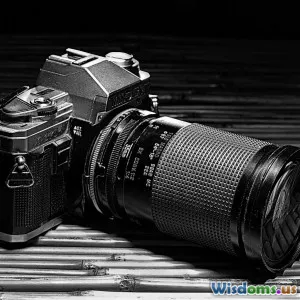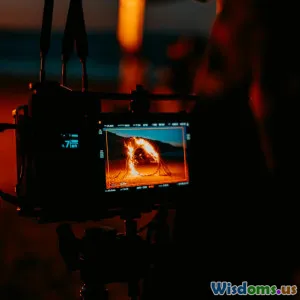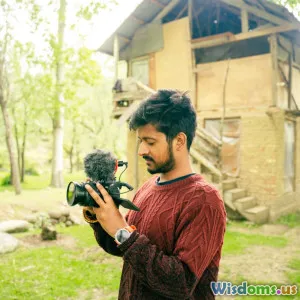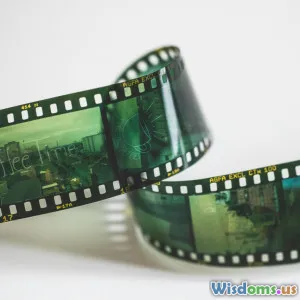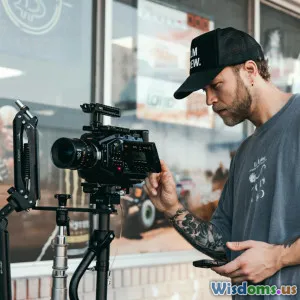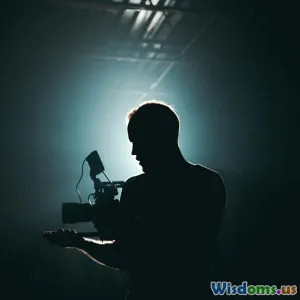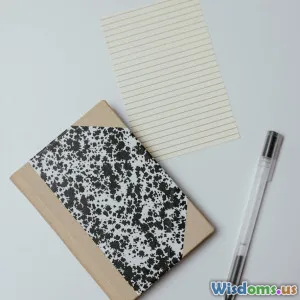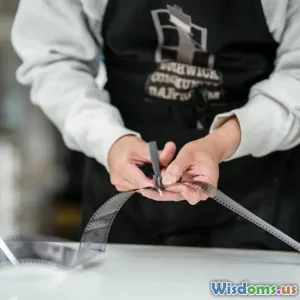
Advanced Cinematic Techniques for New Filmmakers
8 min read Master advanced cinematic techniques to elevate your filmmaking and create visually captivating stories that resonate. (0 Reviews)
Introduction
In the evolving world of filmmaking, technical skill and creative vision intertwine to create stories that captivate audiences. While foundational techniques serve as a solid base for any filmmaker, understanding and applying advanced cinematic techniques unlocks the ability to elevate a film from good to extraordinary. For new filmmakers, mastering these subtleties not only enhances visual storytelling but also breathes life into narratives, deepening audience connection.
This article dives into critical advanced cinematic techniques designed specifically for emerging filmmakers. From dynamic camera movements to lighting nuances, and from color theory application to sound integration, you’ll gain practical, actionable insights that are crucial for professional-quality filmmaking.
Understanding Cinematic Composition
Creative Framing and Rule Breaking
While the rule of thirds is widely taught to compose memorable shots, advanced filmmakers know when—and how—to break it. For example, Wright’s use of extreme symmetry in Blade Runner 2049 frames evokes an unsettling, precise aesthetic that supports the film’s dystopian tone. Instead of purely relying on basic composition rules, experimenting with asymmetry or central framing can immediately define mood and emotional cues.
Pro Tip: Try central framing to isolate characters or objects, lending power or vulnerability to your shots.
Depth Through Layered Reality
Successful filmmakers use foreground, middleground, and background elements simultaneously to create depth in a frame. This layering directs viewer attention while making scenes visually rich. Alfonso Cuarón expertly layers his shots in Children of Men, where moving elements and special effects coexist in one tense take, ensuring visual interest and story immersion.
The Power of Movement: Dynamic Cinematography
Camera Movements that Tell Stories
Static shots set the stage, but controlled movements enhance narrative momentum. For instance, the tracking shot smoothly follows a character to express unity with their journey. Consider the iconic tracking shot from Goodfellas moving through a nightclub—this invites viewers inside the protagonist’s world.
Motion isn’t just literal. Slowly pushing in on a subject can convey intimacy or rising tension, while a sudden whip pan can disorient viewers during chaotic scenes. Understanding when and why to use these helps craft emotional beats.
Modern Tools: Gimbals and Drones
Today’s technology offers filmmakers tools like gimbals and drones that produce cinematic shots once limited to big-budget productions. Incorporating drone aerial shots offers breathtaking perspectives that shape a film’s visual identity. For example, the opening sequences of The Revenant use aerials to showcase wilderness vastness, enhancing themes of isolation.
Using gimbals allows for smoother handheld shots, making action sequences feel immersive without the shakiness of traditional handheld footage.
Advanced Lighting for Mood and Depth
Beyond Three-Point Lighting
New filmmakers often start with the three-point lighting system—key, fill, and backlights—but advanced lighting design pushes boundaries to sculpt scenes dynamically. Using motivated lighting—lighting that is justified by diegetic sources within the scene—adds realism and dramatic emphasis.
For example, The Godfather famously utilizes low-key lighting with heavy shadows that reflect its deep themes of secrecy and moral ambiguity. Emulating such techniques can profoundly influence tone.
Practical Examples & Shadows
Incorporate practical lights—visible sources like lamps, neon signs, or even candles—to add authenticity and serve both as narrative elements and atmospheric devices. Dynamic shadows and silhouettes can emphasize suspense or mystery, demonstrated exceptionally well in suspense genres.
Mastering Color Grading and Palette Choices
Color as an Emotional Tool
Every color choice in cinema conveys psychological meaning: blues evoke calm or melancholy, reds suggest passion or danger, and greens can create unease or naturalism. Wes Anderson’s films are prime examples where color palettes meticulously shape viewers' emotional experience through pastel and saturated hues.
Matching Palette to Story
Advanced color grading reinforces narrative arcs. For instance, Mad Max: Fury Road contrasts the cool blue of the beginning with sun-scorched orange tones as chaos escalates, mirroring story beats visually.
Utilize LUTs (Look-Up Tables) to apply consistent mood-enhancing color treatments during post-production for professional polish.
Sound Design: The Invisible Performer
Beyond Dialogue and Music
Sound in cinema isn’t just background noise—it’s a storytelling device. Advanced filmmakers use ambient sounds, foley, and spatial audio techniques to build immersive worldscapes. Jordan Peele’s Get Out employs subtle sound design, blending naturalistic silence with intense, eerie audio effects that heighten psychological horror.
Audio Layering Techniques
Layering sounds carefully enhances texture and realism. Example: an urban street scene may include honking, distant sirens, footsteps, and conversations at different volumes and spatial orientations.
Using binaural or surround sound recording can create a sense of place that traditional stereo cannot replicate.
Practical Insights and Tools for New Filmmakers
- Invest time in pre-visualization and storyboarding to plan complex shots and movements.
- Experiment with advanced camera rigs creatively; rentals are an option for budgeting filmmakers.
- Collaborate closely with lighting and sound departments; these elements are pivotal.
- Leverage online tutorials and communities for post-production color grading techniques.
As Steven Spielberg once said, “The delicate balance of mentoring someone is not creating them in your own image, but giving them the opportunity to create themselves.” Experiment boldly with these techniques to discover your unique cinematic voice.
Conclusion
Mastering advanced cinematic techniques offers new filmmakers a powerful toolbox to visually and emotionally enrich their storytelling craft. From innovative composition, expressive camera movements, and evocative lighting, to strategic color usage and immersive sound design—each element works in harmony to produce a compelling cinematic experience.
Beyond technical proficiency, the willingness to experiment, learn from iconic works, and adapt innovations will distinguish your filmmaking journey. Armed with these insights, you’re better equipped to push creative boundaries and inspire audiences with films that resonate.
Embrace the challenge—the world is ready to witness your unique lens on the stories that matter.
Rate the Post
User Reviews
Popular Posts










